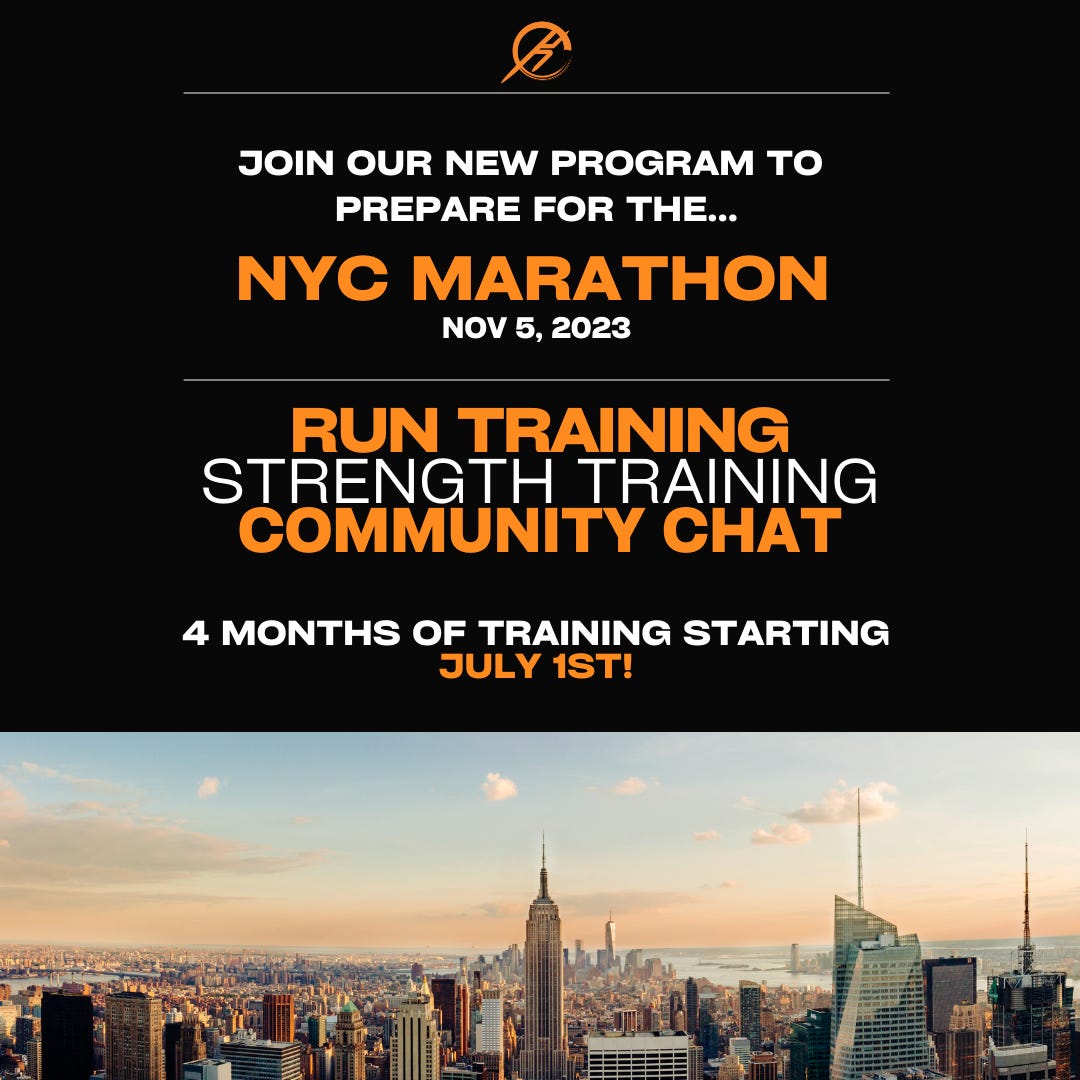The Danger of Redemption Races
Signing up for another race *just* to redeem yourself after a not-great performance is a bad idea.
Fact: Sometimes, a race doesn’t go as planned. No matter how well-trained or well-fueled or well-prepared you are going into race day, there are a lot of variables—from inclement weather to a too-crowded course—that can derail your performance.
Disappointment is normal. But when people are disappointed with their performance or fall short of their goals, too often they rush into another race for a chance to “redeem” themselves. And the idea of a redemption race can be a dangerous one.
It’s tempting to want to capitalize on your fitness. You put in all the work, and you didn’t have the opportunity to show it off the way you would have liked; why wouldn’t you want to find another chance to do that? But immediately jumping into another race negates the recovery period (and you know how I feel about proper recovery). Of course, the recovery period is going to be a lot shorter for a 5K than it is for a marathon, but I find that people mostly talk about redemption runs when it comes to longer distance races due to the months of training that goes into those.
Even if you didn’t give 100 percent during a big race, your body still needs that recovery time before you can expect it to perform optimally. Remember: Long-distance races tax your energy resources; place huge loads on your tissues, tendons, and bones; cause microtrauma in your muscle cells; disrupt hormonal processes; and cause emotional fatigue. It can take up to four weeks for your body to fully recover physiologically from “massive aerobic exercise”—read: a marathon—according to older research published in Free Radical Biology and Medicine.
If you don’t give your body the time it needs to recovery from a race and instead force it to jump immediately back into training plus another huge effort, you’re setting yourself up for overtraining, fatigue, or injury—any of which could make your performance during your redemption race even worse than in your original race.
From a psychological perspective, “redemption” implies a sense of failure. That’s a deeply negative place to start from. Just like your body requires recovery post-race, so does your brain—research published in the Journal of Science and Medicine in Sport shows that mental fatigue can negatively impact performance. Going into a race with excessive anxiety (like the kind that comes from placing extra pressure on yourself to perform a certain way) can also have negative effects on your performance, older research published in the Journal of Sports Sciences found.
If your knee-jerk reaction after a less-than-stellar race performance is to run a redemption race, ask yourself why. Is it because a downpour or oppressive humidity slowed you down? Or is it because you went out too fast or had a nutrition mishap? Post-race—no matter the outcome—it’s always important to take a step back to consider the context around your performance.
Every race is a learning opportunity. What went right? What went wrong? When you rush into another race, it’s almost impossible to give yourself the time you need to process your experience, let alone learn from what happened. And without pausing to consider all the factors that may have influenced the outcome of your original race, you’re likely setting yourself up for disappointment in the redemption race—especially because there will always be factors outside of your control.
Big goals take patience. Look at Des Linden: She finished second at the 2011 Boston Marathon by just two seconds, a result she admits to being disappointed by. It took her seven years to come back and win the damn thing—but she was patient, and she did it. A race doesn’t owe you anything; all you can do is show up and do your best to adapt to whatever circumstances that day dishes out. And a bad race day doesn’t diminish your fitness or mental fortitude; it’s just a bad day.
Running is a long game. Every race is a brick laid on the road to better performance; even the bad ones help you raise the floor, improving what’s average for you. And then, on those rare days when the stars do align, you’ll likely exceed even your own expectations.
the rundown
ASICS Gel-Cumulus 25
I’ve never been a big fan of ASICS’ Gel shoes, but I looooved the redesign of the Gel-Nimbus 25 so I was hoping some of that magic would turn up in the latest iteration of the Cumulus. No such luck. It does have the same Flytefoam Blast+ in the midsole, plus the brand’s new Pure Gel technology in the heel to better absorb impact upon landing. The stack is also higher than in past versions and the shoe is lighter overall, features that I generally prefer in shoes these days. I didn’t dislike running in it (although I did experience a hot spot under the ball of my foot), but it also didn’t do much for me; if I had to choose between this or the new Gel-Nimbus as a daily trainer, I’d go with the Nimbus for sure.
“American Manhunt: The Boston Marathon Story”
I saved this one for after the Boston Marathon, because I knew it would bring up a lot of feelings and I wasn’t ready to feel those feelings before Marathon Monday. I wasn’t a runner when the Boston Marathon bombing occurred in 2013, but as a Boston University alum who fully embraced the citywide block party that was Marathon Monday, it was devastating to experience even from afar. It was also the first time I can remember news unfolding on social media in real-time in my adult life, and I found that to be one of the most interesting elements of this Netflix documentary series: the sheer amount of digital evidence that law enforcement had to wade through, and how they pieced it together to eventually track down the bombers. It was tough to watch, especially the footage from the actual bombing on the course, but I’m glad I had this year’s race experience to remind me how Marathon Monday continues to bring the running community and the city together.
Hopping Is a Super Simple Way to Improve Running Economy
It’s pretty well-known that plyometric (jumping) exercises are beneficial to runners, but a study published in the journal Scientific Reports found even amateur athletes can improve their running economy—AKA how efficiently their body uses energy—by hopping for just five minutes a day. If you want to try it for yourself, the researcherse had study participants do five sets of hops (with both legs either extended or slightly bent) for 10 seconds each, with 50 seconds of rest between each set the first week; then for the following five weeks, runners added an additional set of hops and cut back their rest times by 10 seconds to maintain a total training time of five minutes.
“Diving Deep into the Pain Cave,” Fast Talk
I really enjoyed this podcast about pain in endurance sports. A lot of it focused on how pain is actually more about perception than physical sensation. What matters is the context: At first, pain is a line you can’t cross, but with safe exposure to it, it becomes more manageable. A lot of what neuroscientist Dr. Scott Frey talked about was how pain is tied to the emotional side of the brain—so if you have a fear of pain or catastrophize it, your ability to tolerate it goes down. So instead of dreading the pain cave, it becomes about embracing it or looking at pain as not just a protective element and a way to help regulate effort, but as a positive form of feedback.
***CALLING ALL NYC MARATHONERS!***
It’s time to start thinking about training for the 2023 NYC Marathon! I've teamed up with Kinesis Integrated to offer running and strength coaching specifically tailored to the NYC course (which I’ve run five times, NBD). If you’re interested in training with me, find out more here!








Great stuff! Will feature in my upcoming newsletter in 2 weeks.